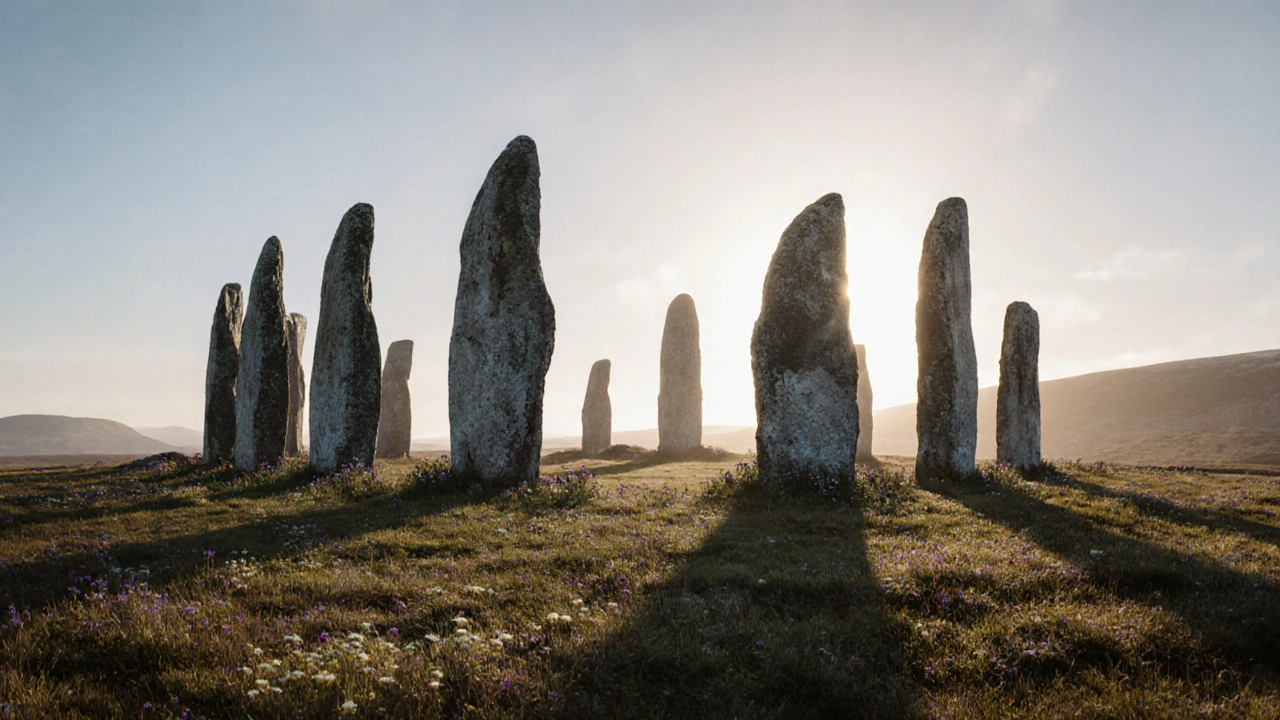Prehistoric Scotland: Ancient Sites, Artifacts, and Living Legacy
When you think of prehistoric Scotland, the time before written records in what is now Scotland, spanning from the end of the last Ice Age to the arrival of the Romans. Also known as ancient Scotland, it’s not just empty hills and forgotten rocks—it’s a landscape shaped by people who built monuments that still stand today. These weren’t random piles of stone. They were calendars, tombs, gathering places, and statements of power, built by communities who understood the land, the stars, and each other better than many modern people realize.
Look closer, and you’ll find Neolithic Scotland, the period between 4000 and 2500 BCE when farming, pottery, and large-scale stone construction emerged at sites like Skara Brae, where houses still have stone beds and storage shelves. Or the stone circles Scotland, arrangements of standing stones, often aligned with solstices, used for rituals or astronomical observation, like Callanish on Lewis or Stenness in Orkney. These aren’t just tourist stops—they’re the oldest surviving architecture in Europe, older than Stonehenge in many cases. And they weren’t built by slaves or aliens. They were built by ordinary families, over generations, using only wood, rope, and sheer will.
Then there’s the art: carved spirals on kerbstones, tiny engraved stones found in burial mounds, and the mysterious symbols on Pictish stones that still haven’t been fully decoded. These aren’t decorations. They’re messages. They’re identity. They’re proof that people in prehistoric Scotland had complex beliefs, social structures, and ways of remembering their past. Even today, archaeologists find new tools, bones, and fragments that rewrite what we thought we knew. Every season, someone digs up something that changes the story.
What you won’t find in most guidebooks are the quiet places—the hidden cairns tucked into moorland, the single standing stone by a back road, the hilltop where a village once lived and vanished. These are the real relics. Not the ones with ticket booths, but the ones you stumble on by accident, under a low sun, with no one else around. That’s when you feel it—the weight of time, the silence of people who lived here thousands of years ago and left behind more than ruins. They left a connection.
The posts below bring you straight to those places and stories. You’ll find guides to the most important sites, what archaeologists have recently uncovered, how to visit without disturbing the land, and why these ancient places still matter to the people living in Scotland today. No fluff. No myths. Just real history, real locations, and real insight into the people who shaped this land long before anyone wrote a name on a map.

Neolithic and Bronze Age Scotland: Standing Stones and Ancient Sites
Caleb Drummond Nov 16 12Explore Scotland's ancient standing stones and prehistoric sites from the Neolithic and Bronze Age. Discover how these monuments were built, what they meant, and why they still hold power today.
More Detail